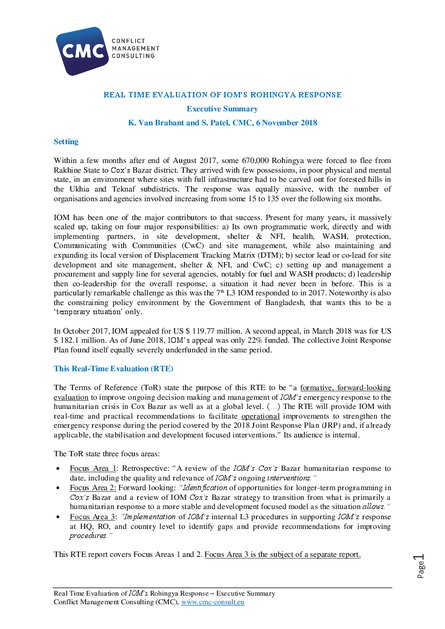
Within a few months after end of August 2017, some 670,000 Rohingya were forced to flee from Rakhine State to Cox’s Bazar district. They arrived with few possessions, in poor physical and mental state, in an environment where sites with full infrastructure had to be carved out for forested hills in the Ukhia and Teknaf subdistricts. The response was equally massive, with the number of organisations and agencies involved increasing from some 15 to 135 over the following six months. IOM has been one of the major contributors to that success.
Present for many years, it massively scaled up, taking on four major responsibilities: a) Its own programmatic work, directly and with implementing partners, in site development, shelter & NFI, health, WASH, protection, Communicating with Communities (CwC) and site management, while also maintaining and expanding its local version of Displacement Tracking Matrix (DTM); b) sector lead or co-lead for site development and site management, shelter & NFI, and CwC; c) setting up and management a procurement and supply line for several agencies, notably for fuel and WASH products; d) leadership then co-leadership for the overall response, a situation it had never been in before. This is a particularly remarkable challenge as this was the 7 th L3 IOM responded to in 2017. Noteworthy is also the constraining policy environment by the Government of Bangladesh, that wants this to be a ‘temporary situation’ only.